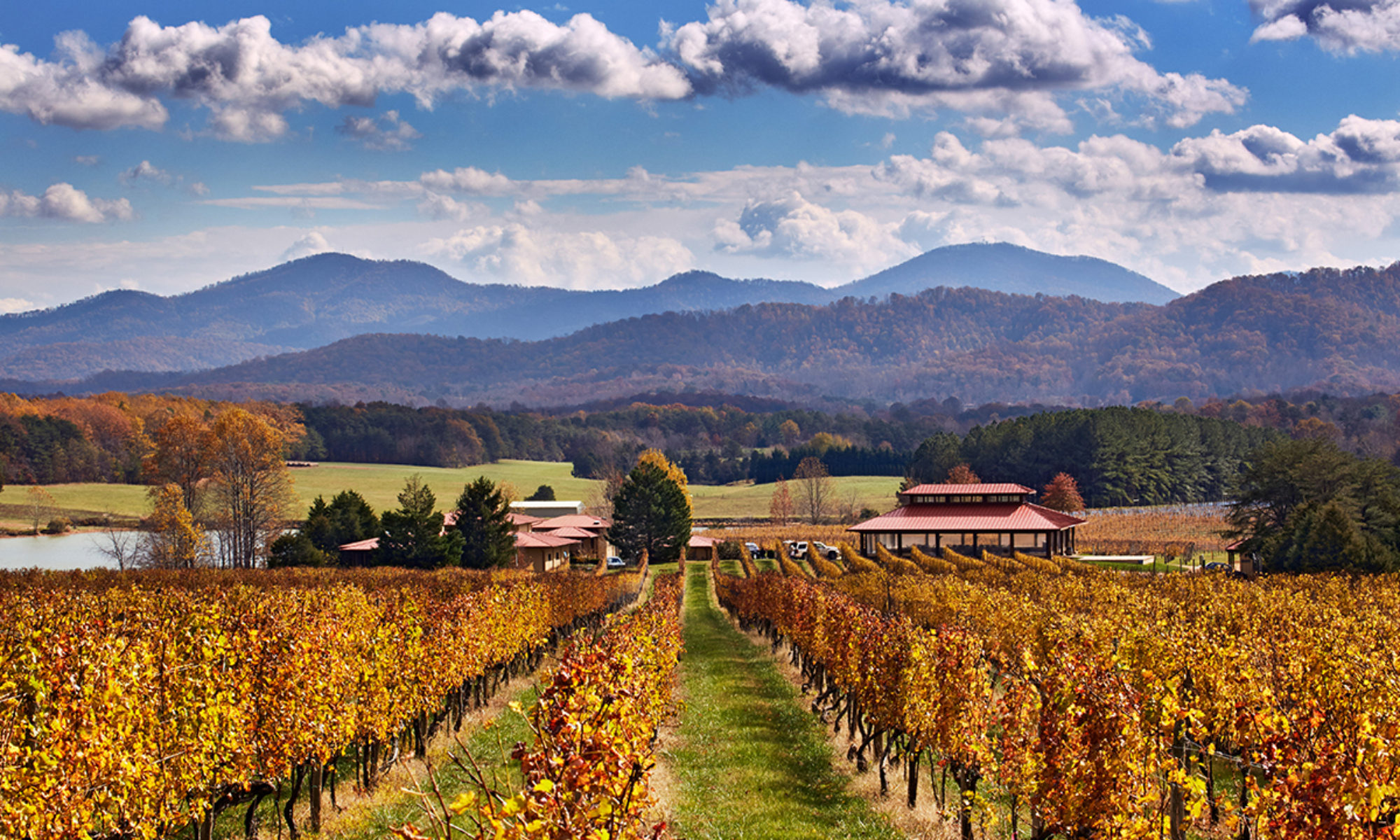Located in Middlebrook, Augusta County, some 20 miles southwest of Staunton, Above Ground Winery is the second generation of owners Matt and Mary Barbagallo’s wine career. After years of operating a tasting room in Purcellville (29 Vines), the Barbagallo’s moved to the Shenandoah Valley for a change of scenery, some cheaper land, and a quieter area for eventual retirement. Above Ground, which opened in August 2021, is where they landed.
Wine: Tier III. Co-owner and winemaker Matt trained under the guidance of Loudoun County’s legendary Doug Fabbioli, of Fabbioli Cellars, and originally started making wine from a wine kit. Above Ground’s wines are simple, and tend to the fruity rather than the dry. Whites include a Chardonnay (labeled “Exit Strategy”), and a Riesling/Apple blend. In the reds, Karma (originally developed by Matt in Loudoun County) is a blend of Merlot and Cabernet Franc, while “Wild River Red” and “Dividing Ridge” are blends of grape and other fruit juices. There is Pinot Noir planted and maturing. Above Ground has not entered major tasting competitions.
Setting: Above Ground is a small farm winery, in a quiet and fairly remote part of the Valley, well west of Interstate 81. Come for the setting: quiet, laid-back, with great views of the mountains and the Shenandoah Valley on both the way in and from the vineyard. Emphasis on the quiet part. There’s no big staff here, either Matt and/or Mary will pour your wine at the small tasting bar.
Stories. Natural Virginia: Land Conservation in Virginia. The closest recreational venue to Above Ground Winery, 6 miles to the west, is the Goshen-Little North Mountain Wildlife Management Area. The Goshen-LNM WMA consists of two large parcels of mountain land, nearly equal in size and with many of the same features. These parcels come together at the Maury River, southeast of Goshen. With a total of 33,697 acres, Goshen-LNM is the largest Wildlife Management Area managed by the state’s Department of Games and Inland Fisheries. Both parcels are mostly forested, dominated by upland hardwoods, with elevations from 1,326 to 3,400 feet. Three major mountains, Bratton, Forge, and Hogback make up the Goshen parcel. The adjoining George Washington National Forest provides expanded opportunity for hunting, fishing and other outdoor activities. Hiking to reach some of the spectacular vistas overlooking the Shenandoah Valley is a challenging opportunity. Wildlife viewing and nature photography are other popular activities. Goshen-LNM WA is the state’s largest WMA, but is just one of hundreds of land parcels in Virginia, large and small, under conservancy arrangements. Multiple organizations are involved in helping farmers, other landowners, and communities arrange for conserving land for future generations. The Division of Land Conservation helps citizens and organizations protect land by assisting in the distribution of state funding for land conservation, and acquiring land for Virginia State Parks and the Virginia Natural Area Preserve System. Since the passage of the Virginia Land Conservation Incentives Act in 1999, the state provides significant tax credits, nearly $2 billion over time, to landowners who donate land or conservation easements to the state. The Trust for Public Land conducted an economic analysis that quantified and summarized the economic benefits resulting from investments in state parks, natural areas, forests, and working lands. The analysis concluded that lands conserved in Virginia provide a host of benefits that have a measurable economic value to the commonwealth and its communities. These include natural goods and services such as water quality protection, air pollution removal, wildlife habitat, and carbon sequestration. The study found that for every public $1 invested in land conservation, $4 in natural goods and services is returned to the Commonwealth of Virginia.
